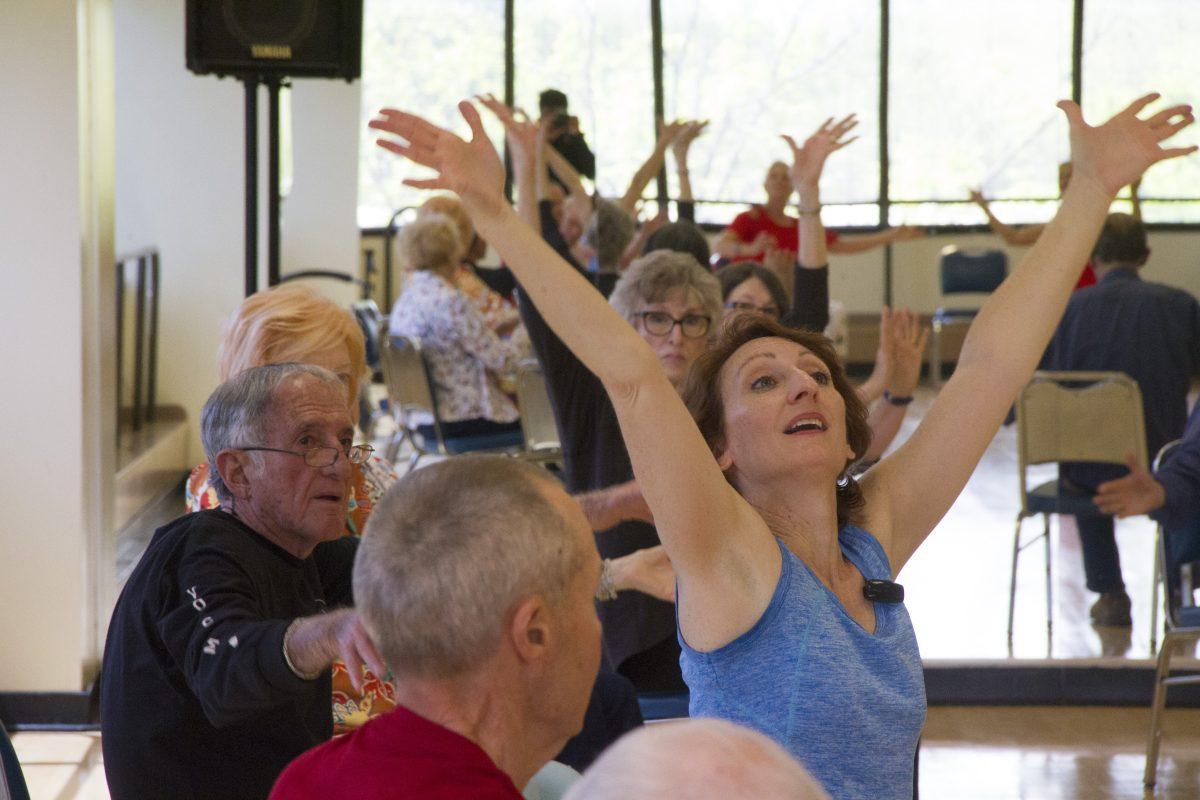Twice a week, individuals with Parkinson’s disease are taught how to dance by a UTD professor.
Professor Misty Owens spends her time outside of the classroom teaching Dance for Parkinson’s Disease classes at Texas Health Presbyterian Hospital. She began instructing classes in 2003, and remains the only instructor in Dallas after moving to Texas from New York.
DfPD was founded in Brooklyn at the Mark Morris Dance Group in 2001 as an alternative support group for individuals with Parkinson’s, and has since become a global initiative.
Parkinson’s disease is a neurodegenerative disorder that affects movement due to its effect on the dopamine-producing neurons in the brain. DfPD is specifically designed for individuals with Parkinson’s by accommodating for their reduced motor capabilities.
Owens said people with Parkinson’s have trouble with movement because of the lack of dopamine in their brains, but in her classes, she aims to invent creative scenarios that encourage movement. A typical class could include any form of dance, including modern, tap, jazz and ballet.
“When I see dance reaching out to different populations, it really catches my eye, it also catches my heart. But seeing that dance can lift up, inspire and encourage people to go beyond their own limitations and look for possibilities,” Owens said. “I knew that there was something more, almost magical, happening, and now we know it’s scientific. There is research that says dance is definitely helping brains and bodies connect.”
Owens said the power of dance is that it stimulates joy and connectivity, and that sensation extends to individuals with Parkinson’s who have trouble communicating between the mind and body.
“A lot of people will come in and just say, ‘I’m having a really hard day, I have no energy.’ And then by the time they leave, a lot of people say they don’t have a tremor, a lot of people will say that, ‘My posture’s so much better after class, I have no symptoms, I’m symptom-free for quite a few hours after dance class,” she said.
Peggy Martin was diagnosed with Parkinson’s disease in 2008 and attended her first DfPD class with Owens in 2011. Her symptoms began with a hand tremor, which later spread to her thigh, and now she experiences “freezing gait,” which is a restriction of her movement.
“The dancing has helped me because you can sing a song, and it’ll put music in your head, and it’ll help you move, and I don’t ever have freezing when I’m in (Owens’) class,” Martin said.
Martin was never a dancer before attending, but now comes twice a week. She said the class engages her, but it also creates a social support group that uplifts her and the other attendees.
“It’s a very welcoming environment, and I think it’s because (Owens) sets that tone. We’re all fighting this battle, and we’re doing the best we can,” Martin said. “She makes us feel like we can do it, and consequently, we can.”
Although attending the class is a stimulating activity, Owens acknowledges that it is sometimes challenging.
“I wish that more people would come to class because I know that it would help them, but really teaching the class, for me, my only challenge is to keep it interesting and keep people excited about coming to class,” she said.
Owens said she hopes UTD students will engage with afflicted individuals in the classroom, especially as more research is published about Parkinson’s disease and treatment options and DfPD continues to expand its global reach.
“There wasn’t a lot of research in the beginning, now there’s more and more research that’s coming out about how dance really reinforces movement in the body, so the more research that happens, the better for all of us,” Owens said. “We really saw it right from the beginning when we were making the class, but now it’s quite contagious. Everyone really loves it.”

















